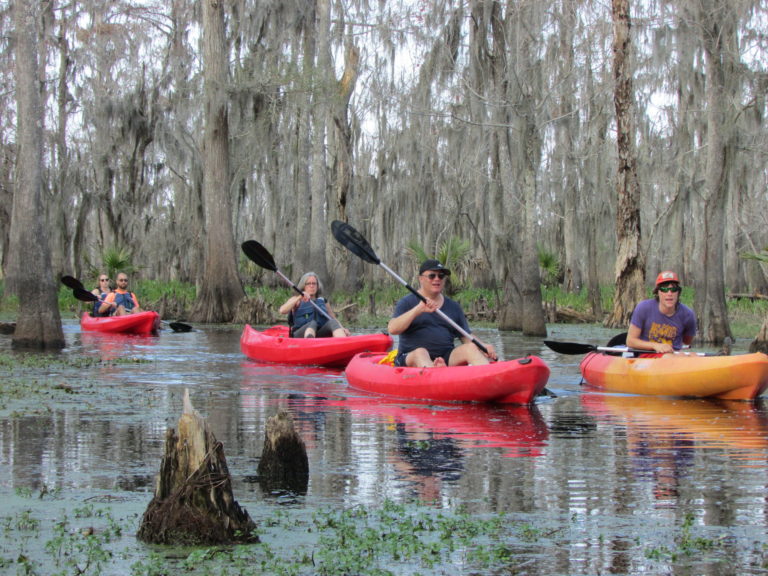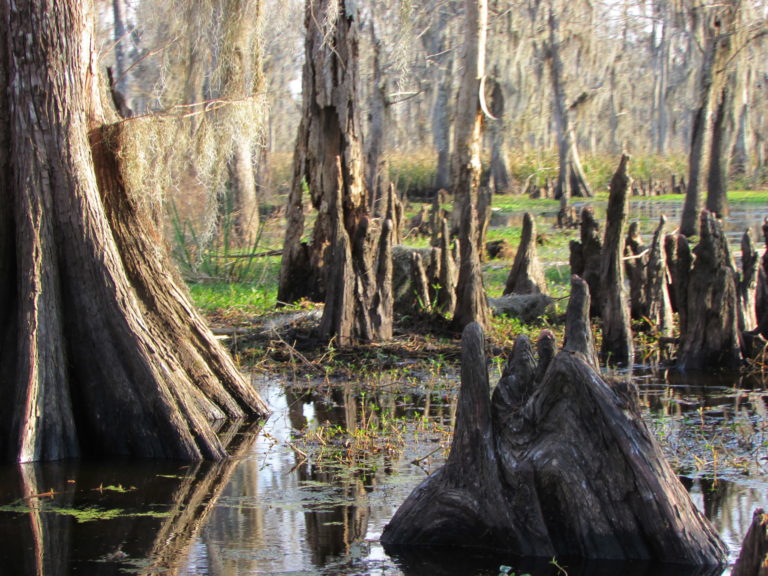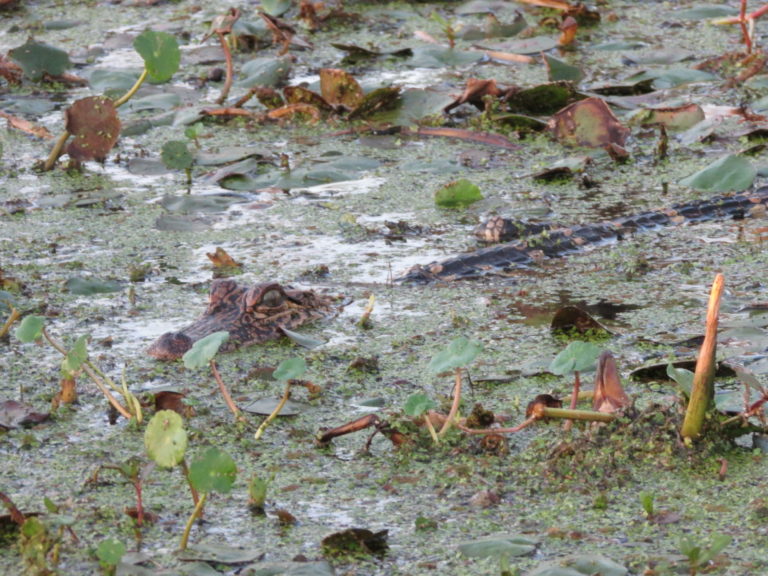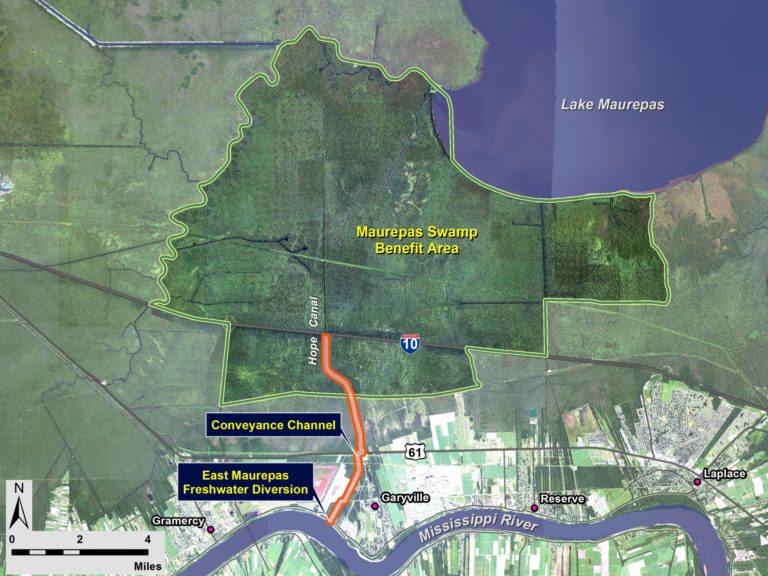We have much more to do and your continued support is needed now more than ever.
Victory for the Prothonotary Warbler in Maurepas Swamp

Recently, a long-awaited victory in National Wildlife Federation’s efforts to restore the Mississippi River Delta and the Gulf of Mexico region was achieved when the RESTORE Council – which controls a portion from the 2010 BP Oil Spill Disaster money intended to go towards Gulf of Mexico ecosystem restoration – voted unanimously to contribute $130 million to the “River Reintroduction into the Maurepas Swamp Project.” This project is one of the National Wildlife Federation’s highest priority projects in the Gulf of Mexico and is the highest priority project for the Louisiana Wildlife Federation.
The Maurepas Swamp is one of the largest forested wetlands in the nation. Dominated by bald cypress and water tupelo trees, this swamp provides incredible habitat to a variety of birds and other wildlife, including the migratory Prothonotary Warbler. In the summer, many of these tiny, bright yellow birds flock to the Maurepas Swamp, building their nests in the cavities of trees–a trait not shared by other eastern wood warblers.
These brightly-colored birds can be seen flitting around in the understory of the swamps for food such as insects or snails. Sadly, these habitat specialists have declined substantially over the past half-century due to loss and alteration of forested wetlands used as their breeding grounds.
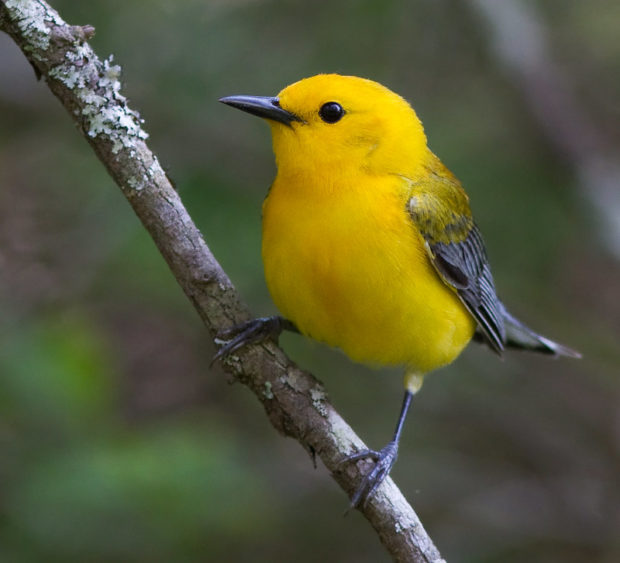
Unfortunately, Maurepas swamp has been in long-term decline with dying trees standing in stagnant water and exposed to salt on the swamp’s outward fringes, and young trees are not growing to replace them. There are several reasons for this decline, including the construction of levees built along the Mississippi River for flood protection and navigation that completely cut off the spring flows of oxygenated freshwater, nutrients, and sediment from the river.
In addition, past logging activities removed old-growth trees and cut canals and ditches through the swamps, which altered the flow of water through the area and allowed saltwater from the Gulf of Mexico to intrude into these freshwater wetlands. Restoring this swamp for nesting prothonotary warblers and other wildlife dependent on this habitat is one of the many victories from the river reintroduction project.
The River Reintroduction into Maurepas Project will reconnect the Maurepas Swamp with the Mississippi River by building a structure through the existing river levee to allow 2,000 cubic feet per second of river water to be diverted into the swamp. The flow of oxygen-rich freshwater and nutrients from the river will flush out stagnant water and push back against intruding saltwater.
This project will increase the health and longevity of 45,000 acres of this swamp, improving and sustaining habitat for alligators, bald eagles, and the prothonotary warbler. The swamp also provides natural storm surge protection for nearby communities in southeast Louisiana as well as hunting, fishing, and other recreational opportunities.
The Restore Council’s commitment of $130 million of oil spill money to this project is a big win and a wise investment in a project that will help restore and sustain an incredible habitat for generations to come.
Thank you to everyone who took action to support restoring Maurepas Swamp. For more opportunities to restore habitat for wildlife, please visit the National Wildlife Action Fund.
Take Action!

